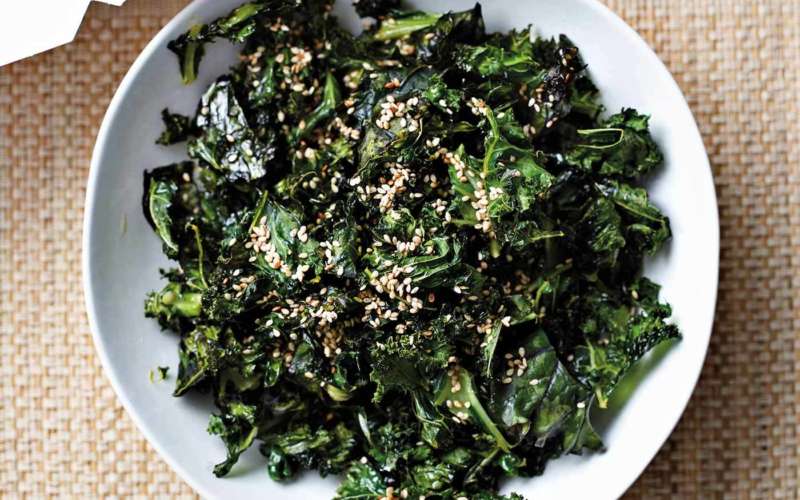If managing weight were as simple as what we’ve always been told—that it’s just a matter of calories in and calories out—we’d all be at our ideal weight.
But it’s clear that’s not the case, with an estimated 2 out of 3 adults being overweight or obese. That’s because food is more than just calories, it’s information that our cells need to function, information that our metabolism can use to either run efficiently or sluggishly.
One of the biggest food lies of all time is that all calories are created equal. Even a kid could tell you that the calories you get from kale are going to have a completely different impact on your body than calories from sweets.
Let’s look at what those calories from sweet foods actually do to your body:
When you eat sweet and other sugary, refined carbs or even fruit juices, your gut quickly absorbs the fiber-free sugars, fructose, and glucose. The glucose spikes your blood sugar, starting a domino effect of high insulin and a cascade of hormonal responses that kick bad biochemistry into gear. The high insulin increases storage of belly fat, increases inflammation, and raises triglycerides; it lowers HDL, raises blood pressure, lowers testosterone in men, and contributes to infertility in women.
Your appetite is increased because of insulin’s effect on your brain chemistry. The insulin blocks your appetite control hormone - leptin. You become more leptin resistant, so the brain never gets the “I’m full” signal. Instead, it thinks you are starving. Your pleasure-based reward centre is triggered, driving you to consume more sugar and fuelling your sugar addiction.
Kale is rich in fiber and low in carbohydrates and sugar
Fructose just makes matters worse. It goes right to your liver, where it starts manufacturing fat, triggering more insulin resistance and causing chronically elevated blood insulin levels, driving your body to store everything you eat as even more belly fat. You also get a fatty liver, which generates more inflammation. Chronic inflammation causes more weight gain and diabesity.
Another problem with fructose is that it doesn’t send informational feedback to the brain, signaling that a load of calories just hit the body. Nor does it reduce ghrelin, the appetite hormone that is usually reduced when you eat real food, like kale.
Kale is rich in fibre and low in carbohydrates and sugar. You’d have to eat a huge amount of leafy greens to reach the same amount of calories that just one small bag of sweets could provide, and thanks to fibre you’d be full long before that could ever happen.

There would be no blood sugar or insulin spike, no fatty liver, and no hormonal chaos from eating a nice hearty helping of kale. The fibre would also cause your stomach to distend, sending signals to your brain that you were full. There would be no triggering of the addiction reward centre in the brain. And you would get many extra benefits that optimise metabolism, lower cholesterol, reduce inflammation, and boost detoxification from all the phytonutrients that kale has to offer.
Eating well should not be all about watching quantity, you need to be paying attention to quality. Real foods like colourful vegetables, low-glycemic fruits, healthy fats (like nuts, seeds, avocados, olives, etc.), gluten-free whole grains, legumes, and responsibly sourced animals proteins and seafood are going to give your cells the information they need to function at their very best.
So choose kale over sweet foods and focus on quality more than quantity; it will change your relationship to food and your health will thank you.
Eating well should not be all about watching quantity, you need to be paying attention to quality

